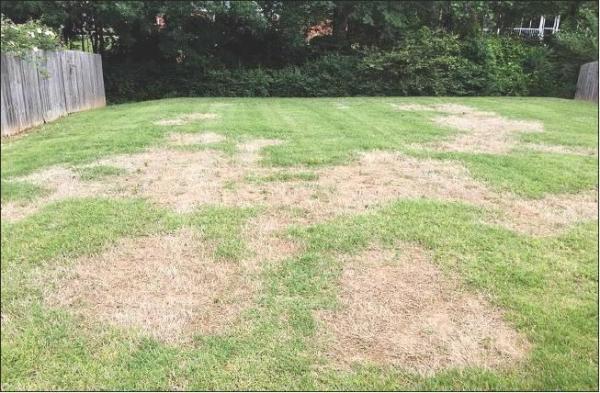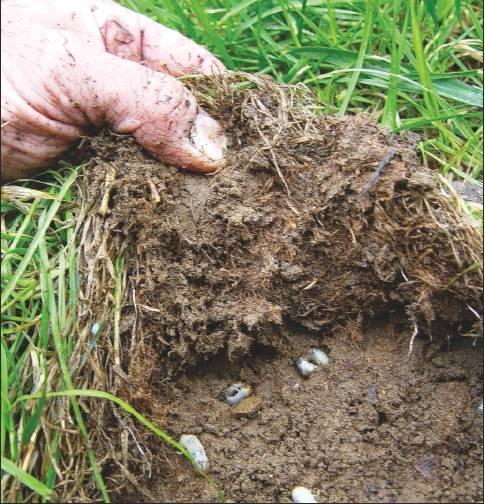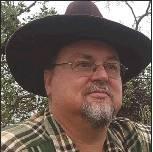Getting into Gardening
After a long, hot summer, our lawns have gotten brown and are looking rather sad. The heat and drought conditions do take a toll. During the heat of the summer, our lawns stop growing go dormant. If conditions become hot and dry enough, the lawn may even begin to die out in some areas. This will cause the lawn to look thin, weak, or have many dead patches throughout. Fall is a good time to revive your lawn. As temperatures cool and moisture becomes more plentiful, most of our brown patches will green up on their own. But by about mid to late October, those areas that haven’t greened up are going to need some help.
One thing we need to be aware of is that even in the hottest heat, grass may die out from causes too. A little examination of the affected area will help you determine the cause and choose the right course to take. Walk out to the middle of your brown spots, reach down a grasp a handful of the grass. Give it a tug, how are the roots? Strong and healthy roots will not allow the grass to be pulled out easily at all. If the sod lifts easily like a carpet, then you may have grubs. Look for white larvae just under the sod layer. Grubs can cause extensive damage to the lawn by tunneling under the roots. An insecticide treatment may be needed. Contact your county Extension Service for recommendations on what chemicals to purchase and when to use them.
You need to do this while the soil is still warm, as the soil begins to cool off, the grubs will go down deep and become difficult to control. Water should be applied immediately after application to move the insecticide down into the root zone.
Insect damage from a number of pests may have occurred during the summer too. White grubs are most often the cause but be aware that there are other insects that can damage the lawn as well. If you need help in this area call in a professional lawn service to help.
If the sod doesn’t lift easily like a carpet, you may have had a disease. Look at the live grass at the edge of the dead area to see if the problem is still spreading. See if the affected area is getting larger. A county Extension Agent or lawn care professional may be able to help you diagnose a lawn disease and determine if a fungicide will help. In most situations, a fungicide is not recommended. Lawn diseases usually come and go rather quickly. Although they can cause a lot of damage, they are generally very short lived. Time and money are better spent repairing the dead areas. If the grass is dead down to the roots and hasn’t greened up, you will need to re-seed.
A lawn generally needs to be re-seeded when all or most of the grass in a particular area is dead. Prior to re-seeding, the dead turf must be removed, making way for the new seed to be applied. Instead of re-seeding, sod may be purchased and put in place. Lawns are often a mixture of two or more different kinds of grass. If your lawn has thinned out and looks clumpy rather than showing large dead areas, it is likely that you have lost one of the varieties to drought or disease. If no more than 50 percent of the total area is dead, then you should consider over-seeding. Over-seeding will take less time and money than re-seeding an entire area but will only work where you still have a partial stand of grass. Remember that as rain returns, or irrigation water is applied most of our lawns will green right up on their own and be just fine so do not overreact.
Sometimes the lawn will begin to green up but not in all areas. This may mean that it has suffered moderate damage from insect or disease pests. In this situation where the lawn has thinned out, but at least 50% of the area remains in desirable grass, over-seeding is a good option. Soil preparation for over-seeding begins by mowing the existing turf a little shorter than normal (about 1 ½ inches). With over-seeding, rather than disturb the entire area like we do when we till the ground or prepare to lay sod, we use a rake or power tool that opens up the soil (in the bare areas) just enough to allow seed to be planted through the existing grass. The object is to loosen the ground enough to allow new seed to meet the soil. If the area is small, a stiff hand rake will do the job. Larger areas will require the use of equipment such as a core aerator. Once the soil is loosened, the seed maybe applied. If the area is small, hand application of the seed is fine. If the area is large, a mechanical seed spreader is recommended.
If you have determined that re-seeding is the best option, then you should first check for troublesome weeds. Difficult to control perennial weeds should be dealt with first. If there are only a few, you may be able to remove them by pulling or digging. You will not get out all of the weeds but any you get out now you will be dealing with later.
The plain truth is that as our summers get hotter and last longer into the fall, hot, dry weather will cause more and more stress on home lawns. This may lead to thin, poor, quality turf. Pests such as insects and diseases may cause large areas of lawn to die out entirely. Once you diagnose the problem, you can begin to make plans to renovate the damaged areas. Fall is the best time to renovate your lawn. Over-seeding of thinned out areas is a good way to improve lawn quality. Severely damaged areas may need to be dug up and re-seeded or re-sodded.
To help prevent damage in the future, there are a few secrets to maintaining a healthy lawn:
1. Do not mow too short. Lawns should be mowed no shorter than 2 1/2 to 3inches.
2. Conduct a soil test (available through your extension office) every couple of years and understand that fertilizers and insecticides may not be needed each and year.
3. Don’t not allow heavy foot traffic, especially when the weather is hot and dry, or turf is excessively wet.
4. Water according to the weather condition, do not over-water.
5. A simple annual top dressing (1/8-inch-deep or less) of compost on your lawn in the fall will work miracles come springtime.
A small amount of effort and money spent in October can often pay huge dividends in March and April. Just wait for the weather to be cooler and get out and get to it!





